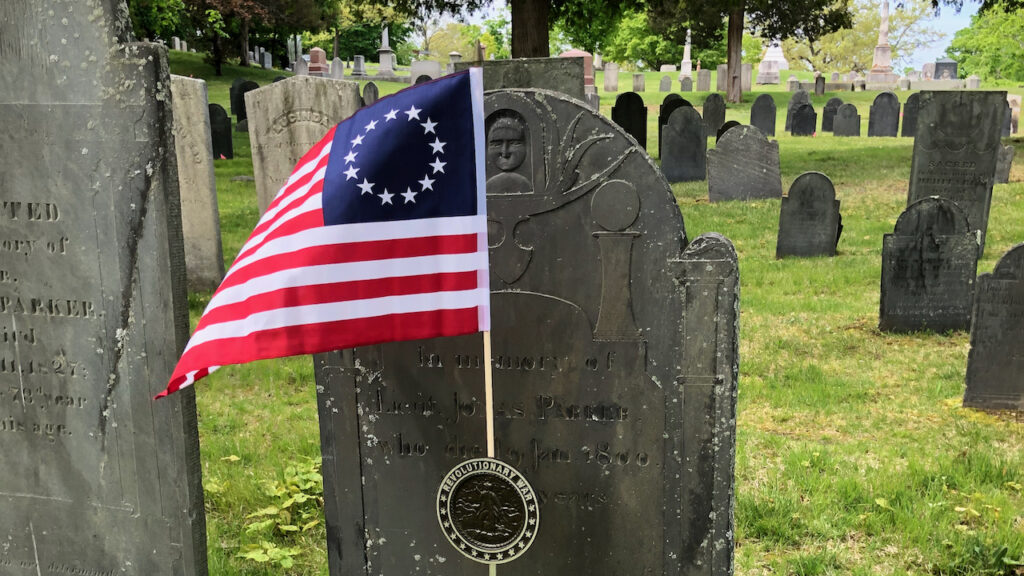A series of articles by the Reading Antiquarian Society

April 18, 1775. Most of us have heard of the Midnight Ride of Paul Revere. And despite the words of Longfellow’s poem, “ready to ride and spread the alarm through every Middlesex Village and Farm”, Revere did not come to Reading, nor did Dawes or Prescott. Martin Herrick was the rider who brought the word to Reading. He came from Medford, through Stoneham, to the Damon house on John Street, hoping to find Dr. John Brooks. Dr. Brooks, at the age of 33, had been chosen to be the captain of the Reading Minutemen. But Brooks was not there, he was said to have been treating a patient at one of the Hartshorn houses on Haverhill Street. Herrick continued on to alert him and then went on to Lynn-End (the current town of Lynnfield).
April 19, 1775. The word had spread. Reading residents gathered their arms and met at Dragon Corner (near the intersection of present-day Woburn and West Streets). By 6:00 AM, they were marching to Bedford and then on to Meriam’s Corner in Concord. They arrived shortly after noon. As they approached Meriam’s Corner, they saw British troops heading east on their retreat to Boston. Shortly after, other companies arrived. It is estimated that as many as 1100 Colonists gathered there – Reading, Framingham, Sudbury, Concord, Acton, Bedford, Chelmsford, and probably Woburn and Wilmington. The Colonists attacked from behind trees and walls, and they continued to skirmish with the British regulars all the way through Lexington, Menotomy (Arlington), and Cambridge.
Thomas Eaton, who had served in the French and Indian Wars, led the 3rd Parish Company. Ephraim Parker, owner of Parker Tavern, and his son, Ephraim, Jr., marched on that day with him. With Dr. John Brooks and the Minutemen were Joshua Eaton (18) and his younger brother Charles (16), who was the fifer.
One of the most referenced accounts of what happened on that day was written many years later by Edmund Foster. Foster was born in Reading in 1752 and was orphaned when he was 7 years old. He was attending Yale Divinity School and was home on spring break when the events of April 19 took place. He marched with the 4th Company of Minute. His account gives us a first-hand look at how the Reading men were involved that day. The transcript of his account can be found in A Town That Went to War by Bruce Morang, copies of which are available in the History Room at the Reading Public Library. Foster later was ordained a minister and became the pastor of the Littleton, MA church.
Thirty-three Revolutionary War soldiers are buried at Laurel Hill Cemetery. Each year, when the veteran’s graves are marked for Memorial Day, those graves have a specific Revolutionary War marker and a Betsy Ross flag. This year, for the weekend of April 19, those markers and flags will also be displayed. Take a walk in the oldest part of Laurel Hill Cemetery (near the main entrance gates on Lowell Street) to see them.
Some of the men returned home to Reading that night. Others stayed to begin what became known as the Siege of Boston. That siege continued until March 17, 1776 when British troops evacuated Boston. Evacuation Day is still a holiday in Suffolk County.
In Part 5, we will hear about a small group of Reading men who took a different route on April 19. And we will begin to hear about how Reading played a part in supporting the troops after the 19th.
